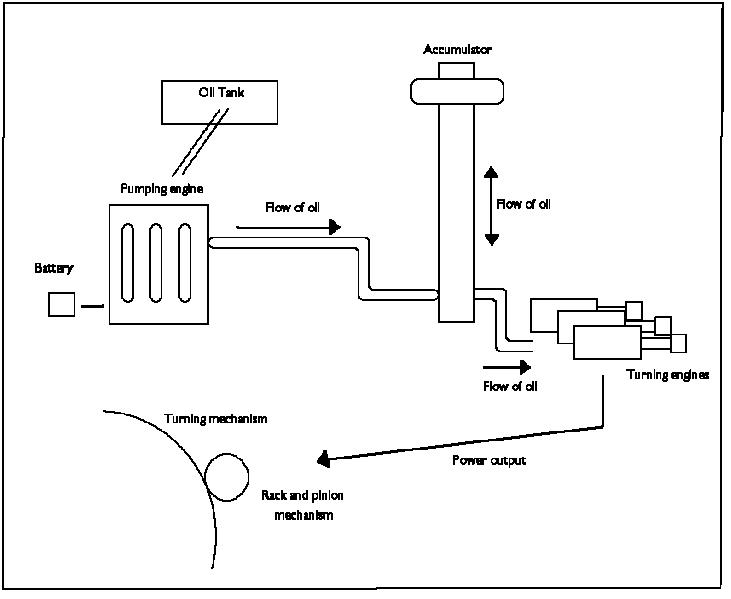
Home
The Railway Organisation
Maintenance Planning
|
Swing Bridges
Across the UK rail network, there are a few swing bridges. These usually cross rivers and allow both the passage of trains and ships. Here, i will be concentrating on two swing bridges as found in Goole and Selby. The following picture is a basic diagrammatic drawing of the layout of Goole Bridge.

The battery starts the pumping engine when the bridge control operator wants to turn the
bridge. All ships passing on the river get top priority. The bridge has to be opened
regardless of delaying trains or not. This is because ships were around before trains,
and that it is harder for a ship to stop. The same applies to cars. Cars have to wait for
trains at level crossings due to the same principle.


The pumping engine draws oil from the oil tank and pumps up the pressure, ensuring that the oil flows to what is known as the accumulator. The accumulator weights are consequently pumped up the accumulator by the pressure of the oil. Once the accumulator is filled, the operator can release the weight at the top. The oil is forced out of the accumulator due to the weight, and is pushed into one of the two turning engines. The oil operates the turning engines, and the motion from these is transmitted to a rack and pinion mechanism. This operates the rotation of the bridge. Selby swing bridge is very similar to Goole swing bridge, however it is considerably smaller. Selby Swing Bridge can be seen below.

So, how do the bridges actually turn? Well, if we take the photo of Selby, arrows can be added to show the pivot point and the direction of motion.

|